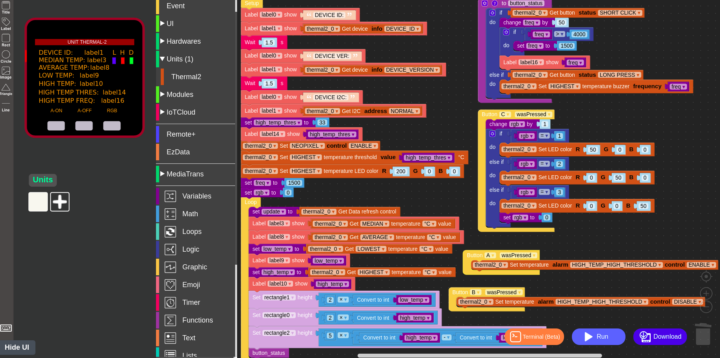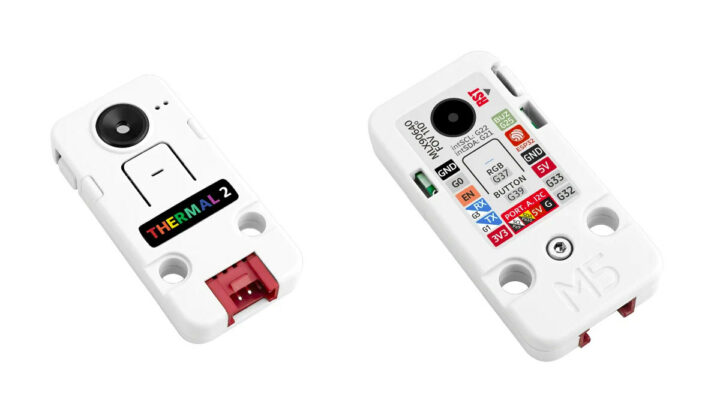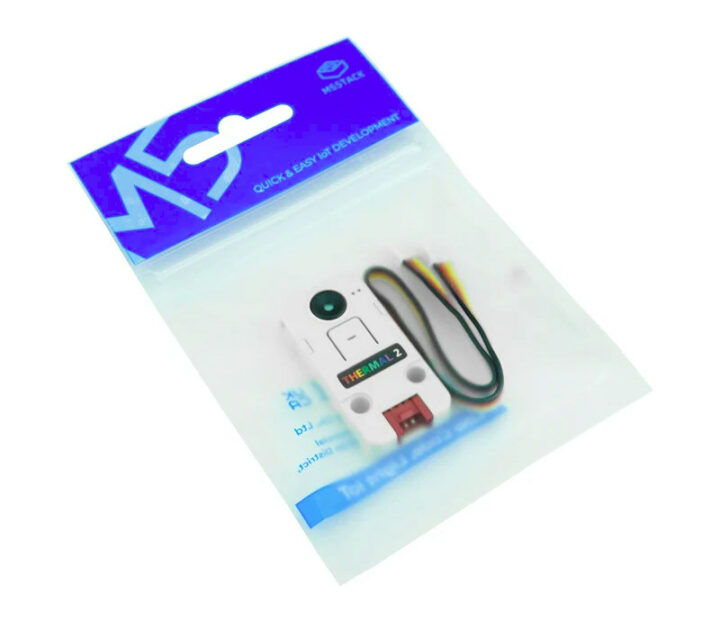We’ve already seen the ESP32 used with a thermal camera (Flir Lepton 3.5) in the tCam-Mini IR board, but M5Stack Thermal Camera 2 Unit offers a more affordable ESP32 thermal camera solution thanks to the MLX90640 IR array thermal camera with a 32×24 resolution.
Based on the ESP32-PICO-D4 system-in-package (SiP) with a dual-core microcontroller offering WiFi and Bluetooth connectivity, the camera module offers a field of view of 110°x75°, and a temperature measurement range of -40°C to 300°C.
M5Stack Thermal Camera 2 Unit specifications:
- SiP – ESP32-PICO-D4 system-in-package with ESP32 dual-core Tensilica LX6 cores, 448 KB ROM, 520 KB SRAM, 4MB SPI flash, 2.4 GHz WiFi 4 and Bluetooth 4.2
- IR camera – Melexis MLX90640 Infrared (IR) sensor with 32×24 pixels IR array, range: -40°C to 300°C with +/-1.5°C resolution, FoV: 110°x75° (See datasheet)
- Expansion – Grove I2C HY2.0-4P interface (“Port A”)
- Misc – Reset button, passive buzzer, user RGB LED
- Power Supply – 5V @ 0.5A via Grove connector (“Port A”)
- Dimensions – 48 x 24 x 8mm
- Weight – 4.9 grams
- Temperature Range – -40°C to +85°C

The company says the device can be programmed with the Arduino IDE or UIFlow visual programming web interface, but the documentation only shows the UIFlow sample shown above. It looks like the program it meant to run on an M5Stack Core2 module (or similar) to which the Thermal 2 Unit is attached. For reference, Melexis also released a C/C++ library for the MLX90640 IR sensor and Sparkfun published Arduino samples, both of which have been available for several years.
The MLX90640 IR thermal camera and by extension, the M5Stack Thermal Camera 2 Unit, can be used for high-precision non-contact temperature measurement, motion detection, as a visual infrared thermometer, and in various DIY projects.
The M5Stack Thermal Camera 2 Unit ships with an HY2.0-4P cable and sells for $69.99 on the company’s online store.

Jean-Luc started CNX Software in 2010 as a part-time endeavor, before quitting his job as a software engineering manager, and starting to write daily news, and reviews full time later in 2011.
Support CNX Software! Donate via cryptocurrencies, become a Patron on Patreon, or purchase goods on Amazon or Aliexpress






